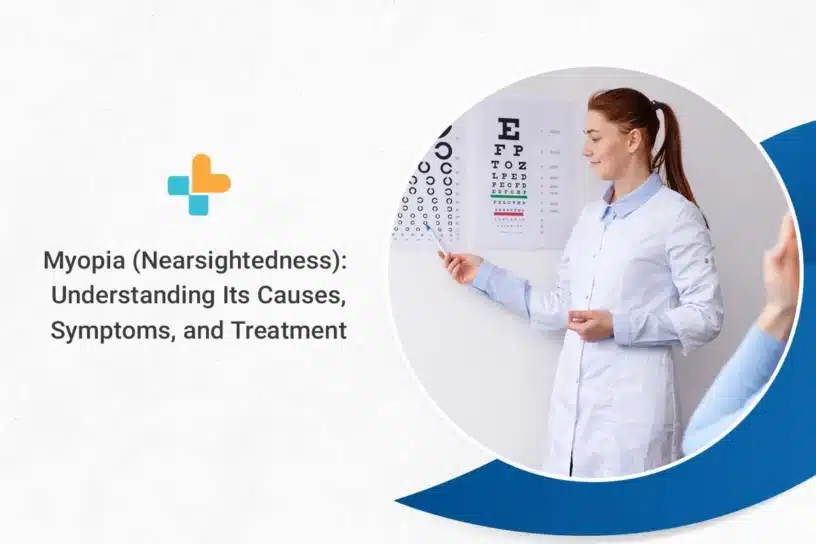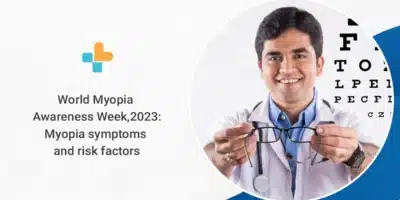If you’ve ever found yourself squinting to read a road sign or struggling to understand the details of an object at a distance, you might want to consider checking yourself for myopia. And you wouldn’t be alone; millions of people suffer from myopia, also known as nearsightedness. This common eye condition is on the rise, affecting an estimated 30% of the world’s population.
But what exactly causes myopia? Is it genetic, environmental, or a combination of both? And most importantly, what can be done to treat it?
In this article, we’ll delve into the world of myopia, exploring its causes, symptoms, and the latest treatment options available.
What Is Myopia?
Myopia, commonly known as nearsightedness, is a condition that affects the eyesight of millions of people worldwide. It’s a refractive error that causes distant objects to appear blurry while nearby objects remain clear.
Myopia occurs when the eyeball is too long or the cornea is too curved, which causes light to focus in front of the retina instead of directly on it. This condition can be genetic, but lifestyle factors such as increased screen time and decreased time outdoors can contribute to it.
Causes or Risk Factors of Myopia
There are several factors that can contribute to the development of myopia.
1. Genetics
Myopia tends to run in families, and research suggests that genetic factors play a significant role in its development.
The conditions can be passed down from parents to their children. Genetic factors that influence eye development and shape may contribute to nearsightedness. If one parent has myopia, their child is 1.5x more likely to have it. If both parents have it, the risk triples.
2. Age
Myopia usually starts between ages 6 and 14.
It affects around 5% of preschoolers, 9% of school-aged children, and 30% of adolescents. Children with nearsighted parents are more likely to develop myopia. Regular eye exams and early detection can help manage this condition.
3. Environment
Environmental factors can significantly contribute to myopia.
Research suggests that spending long periods of time reading, writing, or using electronic devices at close range may increase the risk of myopia.
Furthermore, inadequate outdoor time and a lack of exposure to natural light have also been linked to an increased risk of myopia.
A balance between eye-straining work and taking a break by engaging in outdoor activities can reduce the risk of myopia development.
Myopia Symptoms
Here is a list of common symptoms of myopia:
- Blurred distance vision: Difficulty seeing objects at a distance clearly, such as road signs, whiteboards or TV screens.
- Squinting: Squinting to see objects clearly can temporarily improve vision by reducing the amount of light entering the eyes.
- Headaches: Frequent headaches, especially after prolonged reading, writing, or screen time.
- Eye strain: Feeling tired, fatigued, or sore in and around the eyes after focusing on something for an extended period.
- Difficulty seeing at night: Difficulty seeing in low light conditions, such as when driving at night.
- Need for frequent prescription changes: If you notice that your glasses or contact lens prescription needs to be changed frequently, it may be a sign of myopia.
Some people with myopia may not experience any symptoms and only discover their condition during an eye exam.
Is Myopia Treatable?

Yes, myopia is treatable. There are several options available to correct myopia, including eyeglasses, contact lenses, and refractive surgery.
The most common forms of correction are eyeglasses and contact lenses, which function by refracting light to adjust for the shape of the eye.
Myopia can be permanently fixed through refractive surgery, such as LASIK, by altering the cornea’s shape.
There are also some experimental treatments, including orthokeratology, which involves wearing special contact lenses overnight to temporarily restructure the cornea.
You can even incorporate lifestyle changes to improve myopia by reducing screen time, increasing outdoor time, and practising good eye hygiene.
To find the most appropriate treatment plan for your individual requirements, speak with an eye specialist.
Get the Best Myopia Treatment at Ayu Health Hospitals
Myopia is a common vision problem that affects millions of people worldwide, and there are various factors that can contribute to its development. However, it is treatable through various methods, such as corrective lenses, refractive surgery, and lifestyle changes.
At Ayu Health, our team offers comprehensive eye care services, including myopia management. Contact us today to schedule an appointment and take the first step towards better eye health.
Read more: The Importance of Pentacam Scan in the Management of Corneal Diseases
Our Hospital Locations
Ophthalmology Surgery Hospitals in Chandigarh | Ophthalmology Surgery Hospitals in Bangalore | Ophthalmology Surgery Hospitals in Jaipur | Ophthalmology Surgery Hospitals in NCR | Ophthalmology Surgery Hospitals in Hyderabad
Our Doctors
Ophthalmology Surgery Doctors in Chandigarh | Ophthalmology Surgery Doctors in Bangalore | Ophthalmology Surgery Doctors in Jaipur | Ophthalmology Surgery Doctors in NCR | Ophthalmology Surgery Doctors in Hyderabad
About the Author

Dr. S. Goel
Dr. S. Goel is a renowned Internal Medicine Specialist currently practicing at Ayu Health, Bangalore. He is a Specialist in Internal Medicine, Diabetes HTN, Paediatric Care, and Family Medicine.




